In this series of articles we will discuss three interesting symbols that relate to the Dyad:
3a: The Taoist Yin/Yang symbol
3b: The Mayan Hunab Ku
3c: The Freemasonic checkerboard, two pillars, square and compass
The Dyad: The Illusion of Opposites:
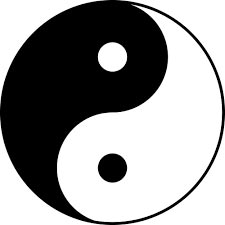
Reference Construction Lesson #5: Drawing a Yin Yang.
Taoism, Yin/Yang & Alternation
In the last article we learned that alternation refers to alternate succession or repeated rotation. It is a model of the “pulsation of Cosmic Life” since all life and the entire universe progress through alternation.
This concept of alternation includes the idea of the dual nature of existence (physical & metaphysical) that forms all things – the yin and the yang – the cosmic in-breathing and out-breathing of reality.
It illustrates the fact of reality of continual movement and change.
All in reality is based on oscillation, fluctuation, frequency and rhythm – a continual symphony of energetic wavelengths – the up and down, inside and outside, around and around, that interweaves to create all space, time, form and life.
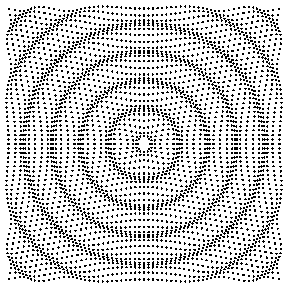
The circle represents the female principle, the yin, one of an unpotentiated, undifferentiated space, the receptive, the “slow, soft, yielding, diffuse, cold, dark, wet and passive…associated with water, earth, the moon and nighttime.”1
The circle is the Monad – a circle of Infinite potential, as of yet, unpotentiated.
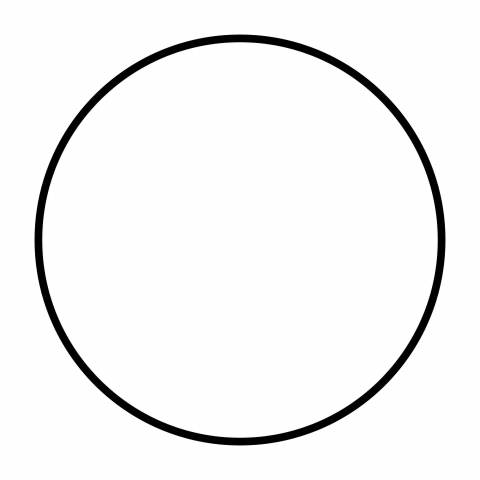
The line represents the male principle. The line is the Dyad – the will of consciousness choosing a potential to actualize from the Infinite potential of the Monad.
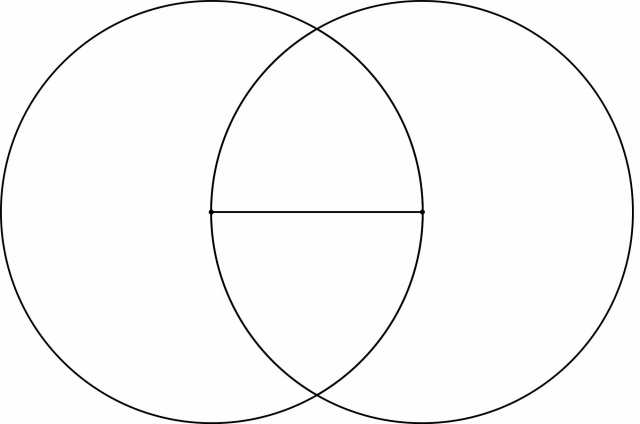
The line is associated with the yang principle characterized as “fast, hard, solid, focused, hot, light, dry and aggressive…associated with fire, sky, the sun, and daytime.”2
The circle is Spirit. The line is focused Consciousness.
These qualities are equal and firmly founded within unity.
There is no breaking them apart; they depend on each other for their very existence.
It is like water and wave – there is no separating them.
It is the Monad and Dyad – They generate and are generated by each other, destroy and are destroyed by each other.
There is no separation in Unity…only an illusion of separation.
We are not separate from each other, our Higher Selves, Nature or the Universe…it only appears that way.
This is the essence of the Two.
Opposites are not Separate. They are connected. Each is dependent upon all others.
Reality is not a line with two stark opposites on each end that are disconnected and separate.
It is a circle where opposing poles fall on opposite ends of the circle, as you move around its circumference.
You cannot take one piece or two pieces out of the circle.
You cannot take certain qualities out of reality, they are an intrinsic part of the whole – interdependent upon one another. We can only chose which qualities we would like to express, recognizing the harmonious balance that can be found between them.
“Yin and yang transform each other: like an undertow in the ocean, every advance is complemented by a retreat, and every rise transforms into a fall. Thus, a seed will sprout from the earth and grow upwards towards the sky—an intrinsically yang movement. Then, when it reaches its full potential height, it will fall.”3

The Yin Yang can be seen in Two Distinct Ways:
There are subtle yet important differences between the two. The importance of the difference between them lies in believing whether or not evil is necessary. According to the idealist philosophy, consciousness, beliefs and expectations form reality. Therefore, if you believe evil is necessary then you will draw its acts to you, or you will eventually, or unintentionally, commit them yourself. If you believe evil is not necessary, yet exists only as a choice, then you are far less likely to draw any evil acts to you or your personal reality.
Positive: Evil and good are parts of the same whole. Evil is not necessary. Evil is a choice, not a universal given. It can be avoided by choosing to live in Unity and Harmony. Unity is the truth and we can choose balance of the two sides – the middle road. This path involves compassion, empathy, acceptance and forgiveness. It involves aspiring to fulfill your own individual highest potential for the greatest good – which will always result in acts of good – whether small or large, seen or unseen – they are harmonious and add to entire picture of peace and harmony in the world, advancing all. This is the path of Unity.
Negative: Evil and good are both necessary. You can’t have one without the other. Evil is a universal given that no one can avoid no matter how they choose to live. This is the basis of negative spiritual schools. They believe they must commit acts of great evil and great acts of good in order to spiritually ascend and become like Gods. This path involves elitism, control, manipulation, violence and corruption. This is the path of Separation.
Taoist Beliefs:
All life, and the entire universe, progresses through alternation.
Every progression (or evolution) is rhythmic alternation and oscillation.
Everything alternates towards its opposite.
The only inevitability is alternation.
Freddy Silva writes, “The principle of alternation, also known as yin/yang in Taoist philosophy, is expressed by the equal division of the circle (representing God). As such, an equal division retains equilibrium – only through an asymmetrical division can natural growth occur in any organism.

The Yin Yang Symbol
The Yin Yang symbol geometrically expresses the principle of alternation.
It expresses the principle of constant change, movement and cycles.
The Universe = Processes.
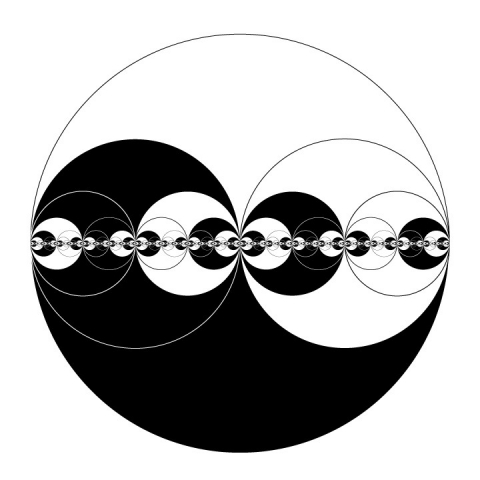
A wonderful explanation of this symbol comes from page 42 of Robert Lawlor’s Sacred Geometry: Philosophy & Practice.
The form arises from two equal circles within a larger circle.
The diameter of each smaller circle is exactly ½ of the larger.
The ratio of the diameter to the circumference of a circle is π . C/D = π
The circumference of the smaller circles: D/2 x π = π D/2
The sum of the circumferences of the two smaller circles equals the circumference of the large circle (2 x π D/2 = π D).
At first glance, this symbol suggests a division of Unity into two equal parts.
Yet an equal division results in static equilibrium, without any possibility for growth.
Asymmetrical division (demonstrated in the 1: √2 relationship) creates proportion and therefore progression into form which we call growth.
This image shows the continuation of the initial division carried through into 4 then 8 divisions.
If the circles are halved indefinitely, at any point, the sum of the circumferences of the smaller circles will always equal the original largest circle.
If continued down to the point where the small circles become nothing but a mere wavy line because they are extremely tiny, and the diameters become indistinguishable from one another.
This will illustrate an important paradox:
- The diameter of the large circle becomes equal to the circumference of that same circle (This would seem to break the law of pi: that pi is the ratio of the circumference to the diameter.)
- Shows, “at the origin and end all differentiation merges towards Unity”.4
The Yin Yang – The Dyad to the Octave
In the image discussed above, the continuation of the initial division carried through to 8 divisions is also an illustration of the Octave.
From the division of One into Two there is a cycle of change, in eight phases with seven intervals.
This is seen in the electromagnetic spectrum, the chemical periodic table of elements and as the musical octave:
- Appears as the ratio two to one – the octave (2:1)
- We experience a similar tone an octave higher or lower, at twice or half the pitch (Halving = Doubling)
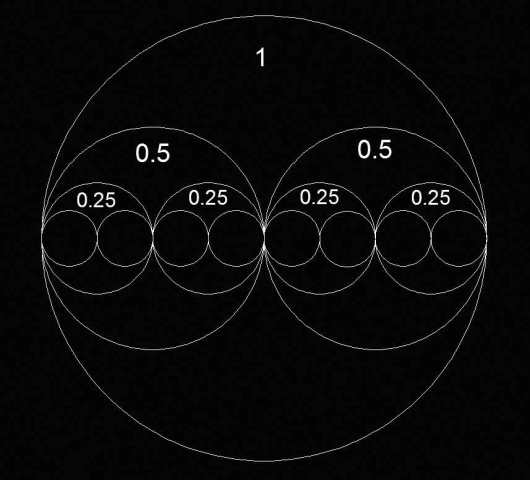
As Robert Lawlor says, “Unity creates by dividing itself.”
The division of the circle into two smaller sections “typifies the ancient Chinese wisdom. One of these smaller circles is the basis of the Yin symbol, the other smaller circle is the basis of the Yang symbol. These two forces, ‘passivity’ and ‘activity’ are in constant interaction throughout the whole of the universe (Tao). The centers of the two circles require emphasizing. The Yin circle has a ‘full’ center point while the Yang circle has an ’empty’ center point (very small circle); these are the acknowledgments of the opposites within each force.”5
The yin yang as a 2D Symbol of a Spiraling Vortex
The yin yang as a spiraling vortex is also a symbol of the all-important Torus that we spend much time discussing in other articles.

- https://en.wikipedia.org/wiki/Yin_and_yang
- ibid.
- ibid.
- Lawlor, Robert, Sacred Geometry: Philosophy & Practice, Thames & Hudson, 1982
- Critchlow, Keith, The Hidden Geometry of Flowers: Living Rhythms, Form and Number, Floris Books, 2011
- Ennis, John, Mayan Hunab Ku, http://www.sun-nation.org/sun-maya-hunab-ku.html
- Troward, Thomas, The Hidden Power, CreateSpace Independent Publishing Platform, 2016
- Hall, Manly, P, The Secret Teachings of All Ages, TarcherPerigree, 2003
- Thomson, Sandra A., Pictures from the Heart: A Tarot Dictionary, St. Martin’s Griffin, 2003
- Schneider, Michael, A Beginner’s Guide to Constructing the Universe, Harper Perennial, 1994
Recent Comments